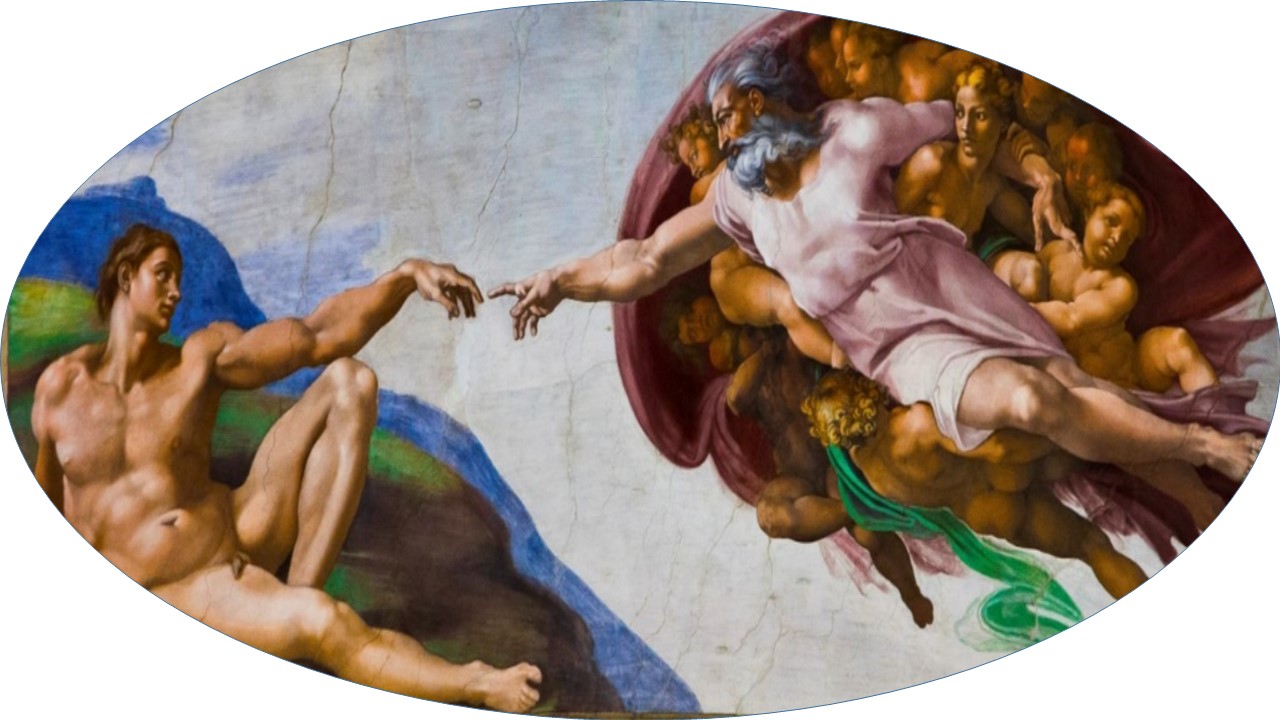To create means to bring into existence.
Creativity, then, is “the use of imagination or original ideas to create something” (according to the Oxford English Dictionary) that did not exist before. (Or failed to pre-exist.) Imagination necessarily precedes creativity.
Using your imagination is internal action. No one else can see it or know it. But, the action of creating delivers the fruits of your imagination into existence, ready for public consumption. Now, we can see or know your idea.
Imagination and creativity are different. Imagination is biological—the connecting and misfiring of the panoply of neurons in your brain. Creativity lives outside your brain and is shared with others within a culture which deems your idea creative or not based on your idea’s originality, validity and utility.
In your imagination, your idea is beautiful, vibrant with possibility. Outside? It’s a cold world sometimes.
“In the beginning God created the heavens and the earth.” Then, God created mankind in his own image. Do individual women and men have the god-like power to create something out of nothing? (We have certainly created the power to reduce the something we inherited into nothing.)
For centuries western culture did not believe in human creativity. Creativity was the divine work of gods and goddesses; human beings were only the instruments of godly desires.
In ancient Greece, the gods and goddesses implanted their own thoughts into a poet—sending her mind into ecstasy. The nine muses, goddesses and guardians of the arts and sciences, were the products of a nine-day binge of lovemaking between Zeus and Mnemosyne, the goddess of memory. Who can forget that?
The prophets wrote in the Old Testament of the overwhelming power of God’s voice. Inspiration was revealed, manifested as command. The prophets were compelled to speak even though they did not understand the revelation. (Bushes burned, red seas parted.)
In the Christian era, inspiration came from the grace of God. One could not seek it. It was a gift that reverberated throughout the mind, body and soul, a gift that could not be controlled or resisted. Art was made “under the immediate influence of God.”
Therefore, artists did not sign their own work. Leonardo Da Vinci did not sign any of his paintings. Michelangelo signed only one work in his lifetime: the Pieta, his sculpture of Mary holding the body of the crucified Jesus. The completed Pieta was first installed in a mausoleum near St. Peter’s in Rome. There, Michelangelo overheard visitors from Lombardy identify the sculptor as one of his rivals. In a burst of hubris, Michelangelo snuck into the mausoleum at night, carving across Mary’s sash: “Michelangelo Buonarroti, Florentine, made this.” According to Giorgio Vasari, a contemporary and fellow Florentine, Michelangelo later regretted his vanity and vowed to never sign his work again.
Individuals were not considered creative, for who can claim credit for the bounties of God’s grace? However, the perceived source of inspiration began to shift during the Renaissance from an external god or muse to an individual’s internal thoughts. By the 18th century, in a widely read book, Conjectures on Original Composition, English poet Edward Young identified genius as “the god within.” God no longer bestowed creativity on a passive individual. Instead, the god of creativity dwelt within the individual artist.
The notion of the “god within” suited the Romantic poets, it buttressed the idea that some white males were geniuses, and that creativity was an exalted realm of an elite. Genius, like the creativity it embodies, is a social designation. If it were an innate talent, then why were all the geniuses white European males?
Today, our understanding of creativity remains a cultural construct that we have inherited through the centuries. We still speak of “courting the muse” and the divine spark of an epiphany. We still dub some people as creative and others as not. However, we identify creative people after the fact: when the something created is deemed original, valid, and useful.
We need to distinguish from the internal process—imagination—and the external evaluation of creativity.
We need to recognize that every human being uses her imagination every day. The constant flow of imagination carries the potential of generating a brilliant idea, an idea that may be original and satisfying to you. But, its value and originality must be perceived by others to be creative.
But, without imagination, no one can reach the point of being dubbed creative.
Creativity is an external, cultural concept. Imagination is the internal, neurological source.





